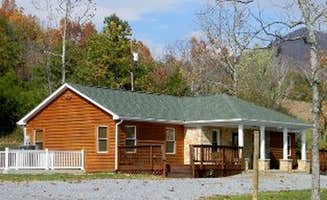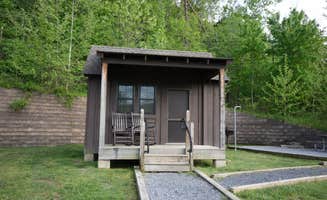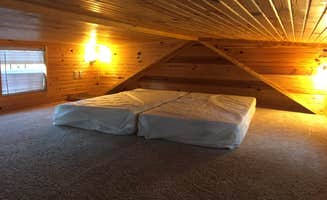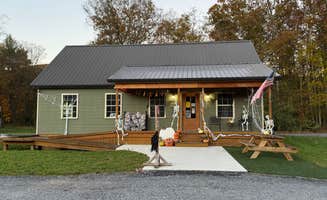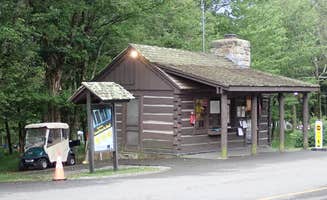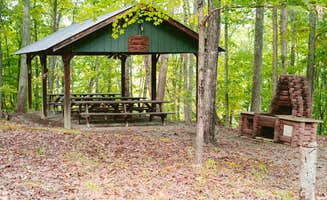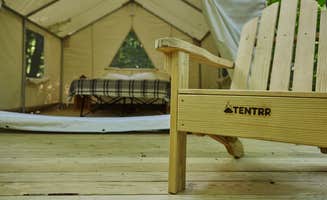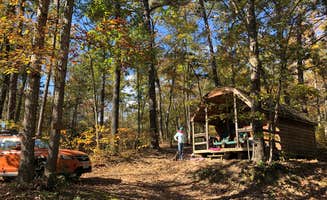Glamping accommodations in the Shenandoah Valley region offer varied options beyond traditional camping. The area sits at elevations ranging from 500 to 2,000 feet, creating distinct microclimates throughout the year. Winter glamping temperatures can drop below freezing at night while summer evenings typically remain in the 60s, with humidity levels generally higher near water sites.
What to do
Hiking from campsites: At Trout Pond Recreation Area, trails connect directly to camping areas. "Lots of hiking and biking trails, although we only did a bit of walking. Campground is maybe 100 yds from the Shenandoah River and it's beautiful down there," notes John B. The recreation area features multiple trail options with varying difficulty levels.
Fishing opportunities: Many sites provide direct river or lake access. "There are several rustic campsites located on the Southfork of the Shenandoah River, as well as modern electric sites, RV sites, and cabins," explains Ricki F. from Shenandoah River State Park Campground. Fishing licenses are required and can be purchased online or at local outdoor retailers.
Water activities: Summer months offer prime river conditions. "There is a designated boat launch at the campground (really steep when you get to the river so I wouldn't back a vehicle all the way to the river)," mentions a visitor to Low Water Bridge Campground. Many sites rent equipment on-premises, with prices typically ranging from $15-40 depending on rental type and duration.
What campers like
Privacy between sites: Site layout varies significantly between campgrounds. "Site 71 best for privacy," notes George H. about Harrisonburg - Shenandoah Valley KOA, while others mention sites with more separation. Camping areas with natural vegetation buffers provide better sound insulation between neighboring sites.
Bathroom facilities: Many campgrounds maintain clean facilities year-round. "The campground is clean, with spacious sites and beautiful views of the mountain ranges and the Shenandoah River that backs right up to the campsite," reports Jason E. Bathhouses at most locations include hot water, though winter camping may have reduced services.
Extended season options: Several locations remain open through colder months. "We stayed here on the night of December 11, 2020. No problem finding a spot, campground was about half full when we got there around 4pm," shares John B. Winter campers should note that water systems may be winterized at some locations between November and April.
What you should know
Cell service limitations: Connectivity varies throughout the region. "There is absolutely no Verizon service here (ATT seems to work pretty well). You'll have to drive 10-15 in either direction on Rt. 211 before you can catch a signal," reports a visitor to Low Water Bridge Campground. Many glamping sites now offer limited WiFi near office areas.
Elevation considerations: Mountain roads can present challenges. "There are some pretty steep inclines to even get to the campgrounds. Unless you have a powerful vehicle pulling your camper, it would help to release your water supply and fill up when you get to the campground," advises Chris J. from Trout Pond Recreation Area.
Seasonal crowds: Popular sites fill quickly during peak seasons. "The primitive camping spots were all taken however, so arrive early if you want one of those," notes one camper. Weekends from May through October typically see the highest occupancy rates, with holiday weekends often booked months in advance.
Tips for camping with families
Kid-friendly activities: Yogi Bear's Jellystone Park Luray offers structured programs. "The kids loved running off in the open field and playing on the zip line. We loved that we could see them from our site. The birthday boy also loved the outdoor laser tag," shares Jen O. Many locations offer weekend ranger programs during summer months.
Wildlife viewing opportunities: Animal sightings enhance the camping experience. "We saw many deer and bear while camping. Just being in Shenandoah is a soothing experience," explains Rachel M. Dawn and dusk provide the best wildlife viewing times, particularly in meadow areas.
Safety considerations: Food storage protocols protect both campers and wildlife. "They take food clean up seriously. You can be fined for leaving food out," cautions Anna R. Bear-proof containers are provided at some locations, while others require campers to store food in vehicles overnight.
Tips from RVers
Site leveling challenges: Many mountain campsites require adjustment. "Our site was not even close to level. It probably shouldn't have been available for a 40'+ RV," notes Jen O. RVers should travel with leveling blocks and stabilizers for uneven terrain common throughout the region.
Hookup variations: Electric service ranges from basic to full. "We found that sites 1, 3, 5, 7, and 9 are FHU (not sure what amp electric though)," shares Laure D. about Big Meadows Campground. Most luxury glamping units feature dedicated 30-amp service, while primitive sites typically offer no electric connections.
Road access challenges: Mountain roads present navigation concerns. "The drive in requires about 25-miles through the roller coaster of steep grade(7+%) hills. There's no way around that, you're in the mountains. Just be aware and be prepared," advises Matt S. RVs over 35 feet may find certain access roads particularly challenging, especially those leading to more remote glamping locations.


